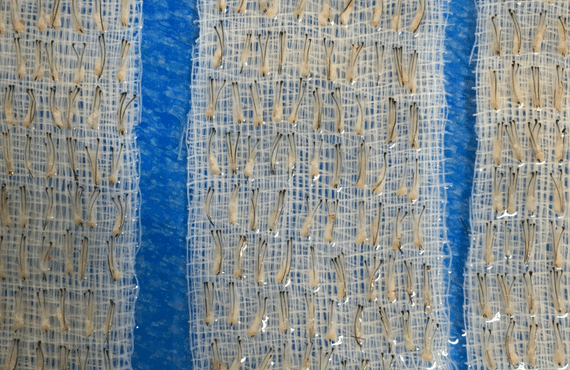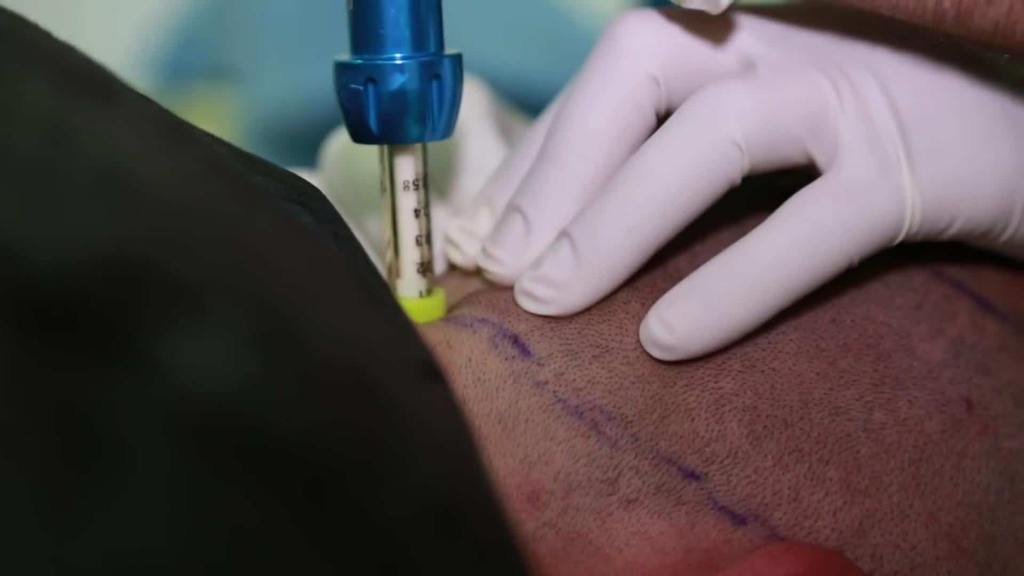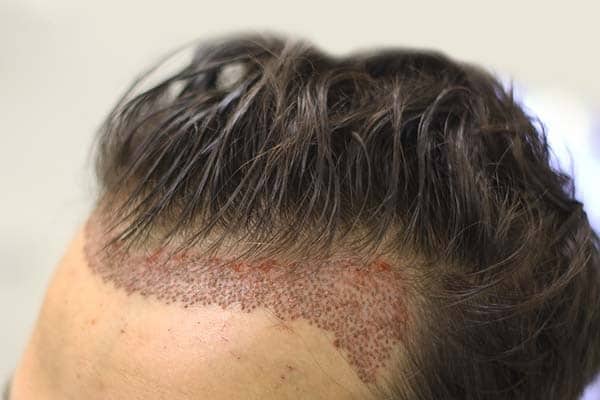Embarking on the journey of 1000 hair grafts before and after is a decision that can redefine your appearance and confidence. In this comprehensive guide, we delve into every aspect of this transformative process. From the initial considerations to the stunning results, we leave no strand unturned.
Table of Contents
Understanding Hair Grafts
Introduction to Hair Transplantation
Hair loss is a common concern for many individuals, impacting self-esteem and confidence. Fortunately, advancements in medical science have paved the way for effective solutions, with hair transplantation being a popular choice. In this discussion, we delve into the fundamental concept of hair grafts to gain a comprehensive understanding of the process.
What Are Hair Grafts?
Hair grafts are the fundamental units of a hair transplant procedure. Essentially, a hair graft is a piece of tissue containing hair follicles that is removed from one part of the body (usually the back or sides of the scalp) and transplanted to an area experiencing hair loss. This technique is particularly beneficial for individuals dealing with male or female pattern baldness.

The two main types of hair grafts used in transplantation are follicular unit transplantation (FUT) and follicular unit extraction (FUE). FUT involves the removal of a strip of skin containing hair follicles, while FUE involves extracting individual follicular units directly from the donor area.
Understanding the anatomy of a hair graft is crucial. Each graft typically contains one to four hair follicles, along with surrounding tissue and structures. The meticulous placement of these grafts by skilled surgeons ensures a natural-looking and aesthetically pleasing result.
It is important to note that the success of a hair transplant relies on various factors, including the surgeon’s expertise, the patient’s suitability for the procedure, and post-operative care. By understanding the role of hair grafts in transplantation, individuals can make informed decisions about addressing their hair loss concerns and restoring their confidence.
The Decision-Making Process
Embarking on the journey towards hair transplantation involves a careful and considered decision-making process. Understanding the factors involved and making informed choices are crucial steps in achieving the desired outcome.
Considering Hair Transplantation
Before diving into the specifics of the procedure, individuals must carefully consider the option of hair transplantation. Factors such as the extent of hair loss, overall health, and realistic expectations play a vital role in this decision. Consulting with a qualified and experienced hair transplant specialist can provide valuable insights into whether the procedure is suitable and what outcomes can be realistically expected.

During this phase, it’s essential to discuss concerns, ask questions, and have a clear understanding of the entire process. The consultation is an opportunity to address any reservations, understand the potential risks, and explore alternative options if necessary.
Choosing 1000 Grafts: Why It Matters
The number of grafts selected for a hair transplant is a critical decision that significantly influences the overall success of the procedure. Opting for 1000 grafts involves a meticulous consideration of factors such as the extent of baldness, the desired level of hair density, and the available donor hair.
Selecting the appropriate number of grafts is a delicate balance between achieving satisfactory coverage and ensuring the longevity of the donor area. Too few grafts may result in inadequate coverage, while an excessive number may compromise the health of the donor site. A skilled and experienced surgeon plays a crucial role in advising on the optimal number of grafts based on the individual’s unique characteristics and goals.
In summary, the decision-making process in hair transplantation involves a thoughtful assessment of whether the procedure is the right fit, followed by strategic choices regarding the number of grafts. By navigating these decisions with care and expertise, individuals can enhance their chances of a successful and aesthetically pleasing outcome in their hair restoration journey.
Preparation and Consultation
Preparing for the Procedure
Preparing for a hair transplantation procedure involves a combination of physical and mental readiness. This phase is crucial in ensuring a smooth experience and optimal results. Here’s a breakdown of key considerations when getting ready for the procedure.
Medical Assessment
Before the actual day of the hair transplant, individuals typically undergo a thorough medical assessment. This assessment helps identify any underlying health issues that may affect the procedure. It also ensures that the patient is physically fit for the transplantation process.
Follow Pre-Operative Instructions
Surgeons provide specific pre-operative instructions to enhance the success of the procedure. These instructions may include guidelines on medication, dietary restrictions, and lifestyle adjustments. Adhering to these recommendations helps create an optimal environment for the surgery and promotes a faster recovery.
Mental Preparation
Acknowledging the emotional aspects of the process is equally important. Individuals should mentally prepare themselves for the changes in appearance, the recovery period, and the gradual growth of transplanted hair. Establishing realistic expectations contributes to a positive overall experience.
Consulting with Experts
A critical step in the preparation phase is engaging in comprehensive consultations with hair transplant experts. These consultations serve as a platform for open communication between the patient and the surgeon. Here’s what individuals can expect during this phase.
Assessment of Hair Loss
Surgeons evaluate the extent of hair loss and discuss the patient’s goals and expectations. This assessment helps determine the most suitable transplantation technique and the number of grafts required for optimal results.
Customized Treatment Plans
Each individual is unique, and a one-size-fits-all approach doesn’t apply to hair transplantation. During consultations, experts create personalized treatment plans tailored to the specific needs and characteristics of the patient. This includes decisions about the harvesting method (FUT or FUE) and the overall strategy for the transplant.

Addressing Concerns
The consultation is an opportunity for patients to voice their concerns, ask questions, and gain a comprehensive understanding of the procedure. Surgeons address these concerns transparently, providing reassurance and building trust.
In conclusion, the preparation and consultation phase is a pivotal step in the hair transplantation journey. By meticulously preparing for the procedure and engaging in open communication with experts, individuals set the foundation for a successful and satisfying experience.
The Procedure Day
Step-by-Step Overview
The day of the hair transplantation procedure is a pivotal moment in the journey toward hair restoration. Understanding the step-by-step process provides individuals with a clear overview of what to expect on this significant day.
Arrival and Check-In:
On the procedure day, patients typically arrive at the clinic or surgical center and complete the necessary check-in procedures. This includes paperwork, final discussions with the medical team, and ensuring that any pre-operative instructions have been followed.
Preparing the Donor Area
The first phase of the surgery involves preparing the donor area, usually located at the back or sides of the scalp. Depending on the chosen technique (FUT or FUE), the surgeon will either harvest a strip of skin with hair follicles or extract individual follicular units.
Graft Preparation
Once harvested, the grafts undergo meticulous preparation. This includes separating individual follicular units and ensuring their viability for transplantation. The goal is to maintain the integrity of the grafts for successful implantation.
Anesthesia Administration
Local anesthesia is administered to both the donor and recipient areas to ensure the patient’s comfort throughout the procedure. This numbing process allows the surgeon to work on the scalp without causing any pain.

Creating Recipient Sites
Using precision and expertise, the surgeon creates tiny incisions, known as recipient sites, in the target area where hair will be transplanted. The strategic placement of these sites is crucial for achieving a natural-looking and aesthetically pleasing result.
Graft Implantation
With the recipient sites ready, the surgeon meticulously implants the prepared grafts. The angle, depth, and density of implantation are carefully considered to achieve a seamless integration with the existing hair and facial features.

Post-Procedure Care Instructions
After completing the graft implantation, the medical team provides post-operative care instructions. This includes information on medication, cleaning the scalp, and managing any potential discomfort. Patients are typically advised to follow these instructions to facilitate a smooth recovery.
What to Expect During the Surgery
Understanding what to expect during the surgery helps alleviate any apprehensions individuals may have on the procedure day. Patients can anticipate a combination of the following:
Prolonged Sitting
Hair transplantation is a meticulous process, and patients should be prepared for prolonged sitting during the procedure. Breaks are usually provided, and individuals are encouraged to communicate with the medical team if they experience any discomfort.
Minimal Discomfort
Thanks to local anesthesia, patients typically experience minimal discomfort during the surgery. Any discomfort is temporary and can be managed effectively with post-operative care.
Team Collaboration
The surgery involves a collaborative effort between the surgeon and supporting medical staff. Teamwork ensures the efficiency and precision required for a successful hair transplant.
By being well-informed about the step-by-step process and understanding what to expect, individuals can approach the procedure day with confidence and a clearer perspective on the path to hair restoration.
Recovery and Aftercare
Post-Surgery Care Instructions
After the completion of a hair transplantation procedure, the recovery and aftercare phase is crucial for achieving optimal results. Following the prescribed care instructions contributes significantly to the success of the transplant and ensures a smooth healing process.
Medication and Cleaning
Patients are typically prescribed antibiotics and pain medications to manage post-operative discomfort and prevent infections. Following the recommended dosage and schedule is essential. Additionally, individuals will receive instructions on how to clean the transplanted area to maintain hygiene and promote healing.
Avoiding Trauma to the Scalp
During the initial days and weeks following the surgery, it’s crucial to avoid any trauma or pressure on the transplanted area. This includes refraining from activities that may cause friction or pressure, such as wearing tight hats or helmets.
Protecting the Scalp from Sun and Elements
Exposure to direct sunlight and harsh weather conditions can negatively impact the healing process. Patients are advised to protect their scalps from the sun and elements by wearing a hat or using sunscreen, as recommended by their medical team.
Follow-up Appointments
Scheduled follow-up appointments with the surgeon are essential to monitor the progress of the transplant and address any concerns. These appointments also provide an opportunity for the medical team to assess the healing process and make any necessary adjustments to the aftercare plan.
Managing Discomfort and Swelling
While discomfort and swelling are common after a hair transplantation procedure, there are effective ways to manage these temporary side effects.
Pain Management
Pain or discomfort in the days following the surgery is typically managed with prescribed medications. Patients should adhere to the recommended dosage and inform their medical team if they experience any unexpected side effects.
Cool Compresses
Applying cool compresses to the forehead and eyes can help reduce post-operative swelling. It’s essential to follow the specific guidelines provided by the medical team to avoid any adverse effects.
Elevating the Head
Keeping the head elevated, especially during sleep, can minimize swelling. This can be achieved by using an extra pillow or adjusting the sleeping position to ensure the head remains slightly elevated.
Patience and Rest
The body’s natural healing process takes time, and patients are encouraged to be patient and get adequate rest. Avoiding strenuous activities and allowing the body to recover is essential for a successful outcome.
By diligently following post-surgery care instructions and adopting strategies to manage discomfort and swelling, individuals can contribute to a smooth and successful recovery after a hair transplantation procedure.
Pictures of 1000 Hair Grafts
You can visit our hair transplant before and after page for before and after photos of 1000 hair grafts.
FAQs about 1000 Hair Grafts Before and After
How many sessions are typically required to transplant 1000 hair grafts?
The number of sessions needed depends on various factors, including the chosen transplantation technique, the size of the recipient area, and the patient’s individual characteristics. A consultation with the surgeon will provide a more accurate estimate.
Is 1000 grafts considered a significant amount for a hair transplant?
While the definition of “significant” varies, 1000 grafts can cover a moderate-sized area and provide noticeable improvement. The suitability of this quantity depends on the extent of hair loss and the patient’s aesthetic goals.
What is the expected recovery time after a 1000-graft hair transplant?
Recovery times can vary, but patients generally resume regular activities within a week. Full recovery, including the growth and stabilization of transplanted hair, may take several months.
Can 1000 hair grafts achieve natural-looking results?
Yes, when strategically placed and with proper planning, 1000 grafts can result in a natural-looking outcome. The expertise of the surgeon and adherence to post-operative care instructions are crucial for achieving the desired effect.
Are there any restrictions on activities after a 1000-graft hair transplant?
Patients are typically advised to avoid strenuous activities and to follow specific guidelines regarding sun exposure, hat-wearing, and hair washing. These restrictions ensure a smooth healing process.
What factors determine the cost of a 1000-graft hair transplant?
The cost is influenced by factors such as the clinic’s location, the surgeon’s experience, the chosen transplantation technique, and any additional services included in the treatment package.
Can 1000 hair grafts address extensive hair loss?
In cases of extensive hair loss, 1000 grafts may not be sufficient to achieve full coverage. The surgeon will assess the degree of hair loss during the consultation and recommend an appropriate number of grafts to meet the patient’s expectations.
How soon can results be seen after a 1000-graft hair transplant?
Initial results, such as the growth of transplanted hair, can be observed within a few months. However, the full and final outcome may take up to a year as the hair continues to mature and blend with existing hair.
What are the potential risks associated with a 1000-graft hair transplant?
Risks can include infection, scarring, and changes in sensation, but these are rare. Adhering to post-operative care instructions and choosing a reputable surgeon minimizes these risks.
Can 1000 hair grafts be combined with other hair restoration treatments?
Yes, depending on individual needs, patients may choose to combine a 1000-graft hair transplant with other treatments such as medications, laser therapy, or platelet-rich plasma (PRP) for enhanced results. Discussing options with the surgeon is advisable.

